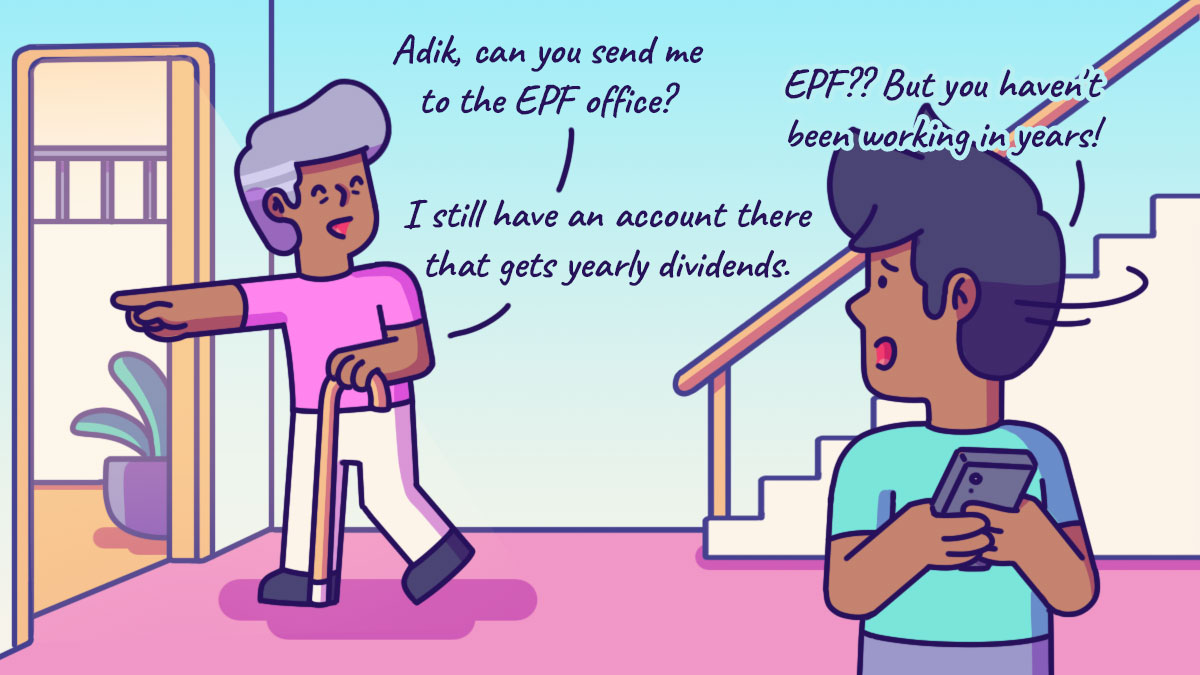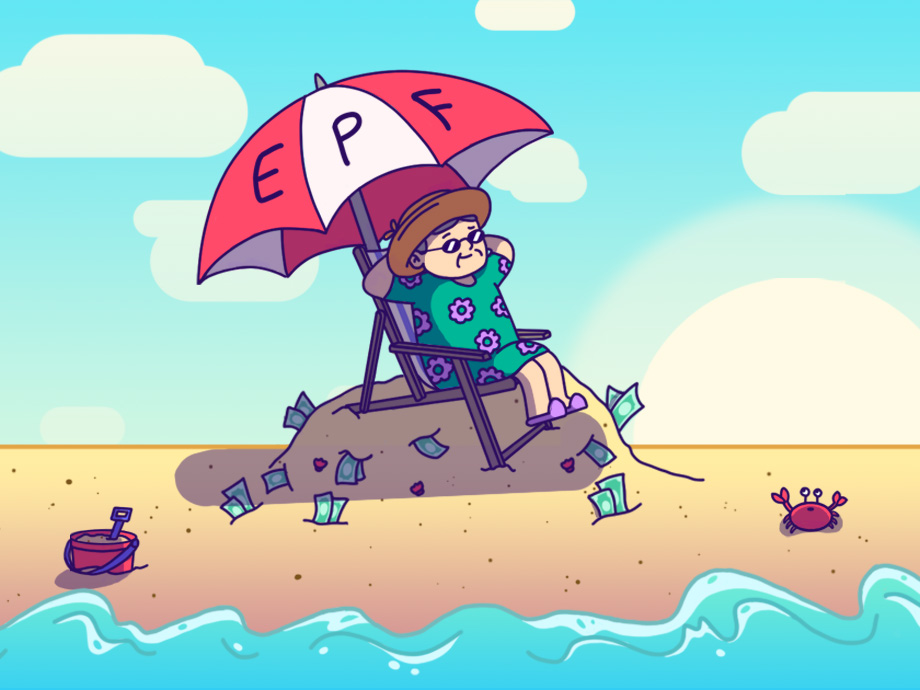Financial Planning | Personal Finance | Article
Get All Your EPF Questions, Answered!
by Ooi May Sim | 3 May 2024 | 7 mins read

Most of us have it, yet not everyone fully understands how our Employees Provident Fund (EPF) works.
But as EPF plays a vital role in our future retirement fund, it is essential for us to understand its contributions, withdrawals, investment options, and the benefits it provides.
So, whether you just started your career or are a seasoned professional, learning about EPF and how it works is important for your financial journey.
Why must I contribute to EPF every month and what does EPF do with all my money?
For starters, EPF is the national retirement savings fund to help Malaysian workers save for retirement. It is compulsory for all employees in the private sector and non-pensionable public sectors to contribute to their EPF savings through monthly salary deductions. Your employer is required to contribute to your retirement fund as well, which is a win as this helps boost your savings.
Once the money is in your EPF account, EPF uses it to invest in a diverse portfolio which includes fixed income, equity, real estate infrastructure and money markets. The returns that are generated will then be channelled back to you through annual dividends.
What type of income is subject to EPF deductions, and what isn’t?
Not all income is subject to EPF deductions. Here are the forms of income that are subject to EPF contributions:
- Salary
- Bonus
- Allowance
- Commission
- Incentives
- Arrears of salaries
- Payment in respect of unutilised annual or medical leave
- Paid maternity leave
- Paid study leave
And here are payments that are not liable for EPF contributions:
- Service charge
- Overtime payment
- Gratuity
- Retirement benefits
- Retrenchment
- Temporary lay-off & termination benefits
- Payment in lieu of notice of termination of employment
- Travelling allowance or the value of any travelling concession.
- The above list is not exhaustive.
Why are there different contribution percentages (11%, 12%, 13%) and what do they mean?
Every month, a mandatory 11% of an employees’ income will be deducted from their salary and placed into their EPF account. Employees aged 60 and above who are still working are not required to contribute.
If an employee would like to place more money into their EPF, they can do so under the voluntary contribution scheme. There are different types of voluntary schemes you can contribute to (Self Contribution, i-Saraan Contribution, i-Suri Contribution and Account 1 Top-Up Savings Contribution), however, the maximum contribution across all schemes is RM100,000 per year.
For employers, it is mandatory for them to contribute towards their employee’s EPF savings every month. This contribution is calculated as a percentage of their employee’s monthly salary; 13% of an employee’s salary if the employee earns RM5,000 and below, and 12% if the employee earns above RM5,000 every month. If an employee is aged 60 and above, employers are required to contribute 4% of their monthly salary.
Related
What is the difference between all the Accounts?
From May 11 this year, all EPF members under 55 will have three accounts:
- Akaun Persaraan (Replaces Account 1 and holds retirement savings)
- Akaun Sejahtera (Replaces Account 2, which focuses on life cycle needs)
- Akaun Fleksibel (Allows withdrawals for short-term needs).
If you currently have EPF savings, your existing balances will remain in their former accounts. However, moving forward, new contributions will be split three ways with 75% going into Persaraan, 15% into Sejahtera and 10% into Fleksibel.
Akaun Fleksibel will start with zero balance, but EPF members will be given a one-time option to transfer part of their savings from their Akaun Sejahtera to the newly launched Akaun Fleksibel. They have from May 11 until Aug 31 to do so. After you’ve opted in, you cannot cancel your application because the funds will be transferred to your Akaun Fleksibel within 24 hours. So, think properly before making your decision.
To opt-in for this, or to withdraw money from your Akaun Fleksibel, you have to apply through your KWSP i-Akaun or at any EPF branches nationwide.
You won’t be able to decide on the amount you want transferred. Rather, how much you can transfer depends on how much you have in your Akaun Sejahtera. If you have…
- Below RM1,000: The whole amount will be transferred to your Fleksibel account.
- Between RM1,000 and RM2,999: RM1,000 goes into Akaun Fleksibel, with the rest of your money remaining in your Sejahtera account.
- RM3,000 and above (a specific portion will be transferred into your three accounts):
Half of your money in your Sejahtera account will be retained there.
1/3 of the money in your Sejahtera account will go to Fleksibel.
1/6 of the money in your Sejahtera account will be transferred to your Akaun Persaraan.
Once the money is in your Akaun Fleksibel, it can be withdrawn any time; the minimum withdrawal amount is RM50.
When can I withdraw my EPF savings?
As soon as you turn 50, you have the option to make a one-time partial withdrawal from your Akaun Sejahtera savings.
When you reach age 55, all savings will be merged into Akaun 55. You can withdraw all or part of the savings from this account at any time.
And if you continue working after age 55, all further contributions will be credited into your Akaun Emas, which can be withdrawn only when you reach age 60.
You can also withdraw a portion of your EPF savings to pay for these:
- To buy a property
- To pay for your education
- To cover medical costs for yourself or your family
- To perform Hajj

What happens to my EPF after I retire? Will I still be able to contribute to EPF after I retire?
You will be able to withdraw all your money from your EPF after you retire. However, if you maintain a portion of your savings in your EPF, you will continue to earn dividends on your savings until you reach age 100.
This allows you to benefit from annual dividends and the compounding effect even after retirement.
How are EPF dividends calculated?
EPF dividends are calculated daily and are paid once a year based on how much you have in your account on January 1.
Meaning, if you self-contribute RM100,000 on December 31 of a particular year, you will not receive dividends for that contribution that year. You will, however, begin receiving dividends on that sum from the following year onwards. The longer you keep your money in your EPF account, the more dividends you’ll earn.
Can I withdraw my self-contribution?
All money (voluntarily or otherwise) that is placed into your EPF account follows the same EPF withdrawal principles.
Related
Are there any tax benefits for contributing towards your EPF?
Yes, your EPF contributions can be used to offset your taxes. EPF is grouped in the same category as life insurance, and together, the maximum relief is RM7,000.
Meaning, if your salary is RM4,000 a month, your annual EPF contribution will be 5,280 (11% of RM4,000 = RM440 x 12 months). If you pay RM200 a month in insurance, you will be able to claim the maximum RM7,000 in this category.
Is there a risk that I’ll lose all/some of my EPF savings?
EPF is a risk-free way of saving for retirement. The EPF guarantees a minimum 2.5% dividend annually (for conventional savings) but has been giving an average 5.95% annual dividends for the past 10 years (2014-2023).
What happens to all my EPF money after I die?
If you have nominated beneficiaries, your EPF will be paid to them accordingly (you can nominate more than one person, and state what percentage of your EPF you would like each nominee to get).
However, if an EPF member passes away without nominating a beneficiary, the following conditions apply:
- If the member (that has passed away) has less than RM25,000 in their EPF Account, an initial RM2,500 will be paid to their next of kin and the balance will be paid two months after the member’s death.
- If the member has more than RM25,000 in their EPF Account, an initial RM2,500 will be paid to their next of kin followed by a second payment of not more than RM17,500 will be paid two months after the member’s death. The balance of the savings will be paid upon submission of the Letter of Administration/Grant of Probate/Distribution Order/Faraid Certificate from estate Administrators such as Amanah Raya Berhad or the Court or the Land Office


















